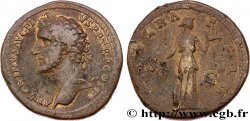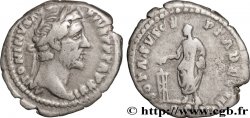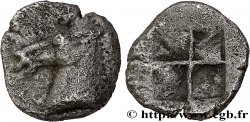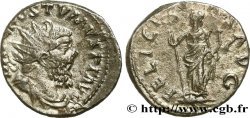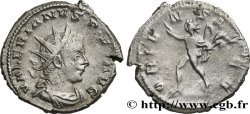You must signin and be an approved bidder to bid, LOGIN TO BID. Accounts are subject to approval and the approval process takes place within 48 hours. Do not wait until the day a sale closes to register. Clicking on « bid » constitutes acceptance of the terms of use of cgb.fr private e-auctions.
Bids must be placed in whole Euro amounts only. The sale will start closing at the time stated on the item description; any bids received at the site after the closing time will not be executed. Transmission times may vary and bids could be rejected if you wait until the last second. For further information ckeck the E-auctions F.A.Q.
NO BUYER'S FEE.
NO BUYER'S FEE.
| Estimate : | 225 € |
| Price : | 52 € |
| Maximum bid : | 52 € |
| End of the sale : | 24 February 2025 15:07:40 |
| bidders : | 6 bidders |
Type : Drachme
Date: an 17
Mint name / Town : Alexandrie, Égypte
Metal : copper
Diameter : 34 mm
Orientation dies : 12 h.
Weight : 22,27 g.
Rarity : R2
Coments on the condition:
Exemplaire sur un flan très large, à bords biseautés avec les légendes peu visibles. Beau buste d’Antonin. Sujet bien venu à la frappe. Épaisse patine verte, légèrement granuleuse
Obverse
Obverse description : Buste lauré et drapé d’Antonin le Pieux à droite, vu de trois quarts en avant.
Obverse legend : [AUT K T AIL ADR] -ANtwNEINOS [SEB EUS ](Autokratoros Kaisaros Titos Ailios Adrianos Antwneinos Sebastos Euseubios)
Obverse translation : (L’empereur césar Titus Aelius Hadrien Antonin auguste pieux).
Reverse
Reverse legend : L.
Reverse description : Le Nil allongé à gauche sur un crocodile, tenant une corne d’abondance de la main droite d’où sort une petite niké, accoudé sur un rocher, tenant un roseau de la main gauche.
Commentary
Poids très léger. Beau buste. Revers intéressant pour cette drachme qui a pu être frappée entre l’an 4 et l’an 21.
Very light weight. Beautiful bust. Interesting reverse for this drachma which could have been struck between year 4 and year 21
Very light weight. Beautiful bust. Interesting reverse for this drachma which could have been struck between year 4 and year 21








 Report a mistake
Report a mistake Print the page
Print the page Share my selection
Share my selection Ask a question
Ask a question Consign / sell
Consign / sell
 Full data
Full data

